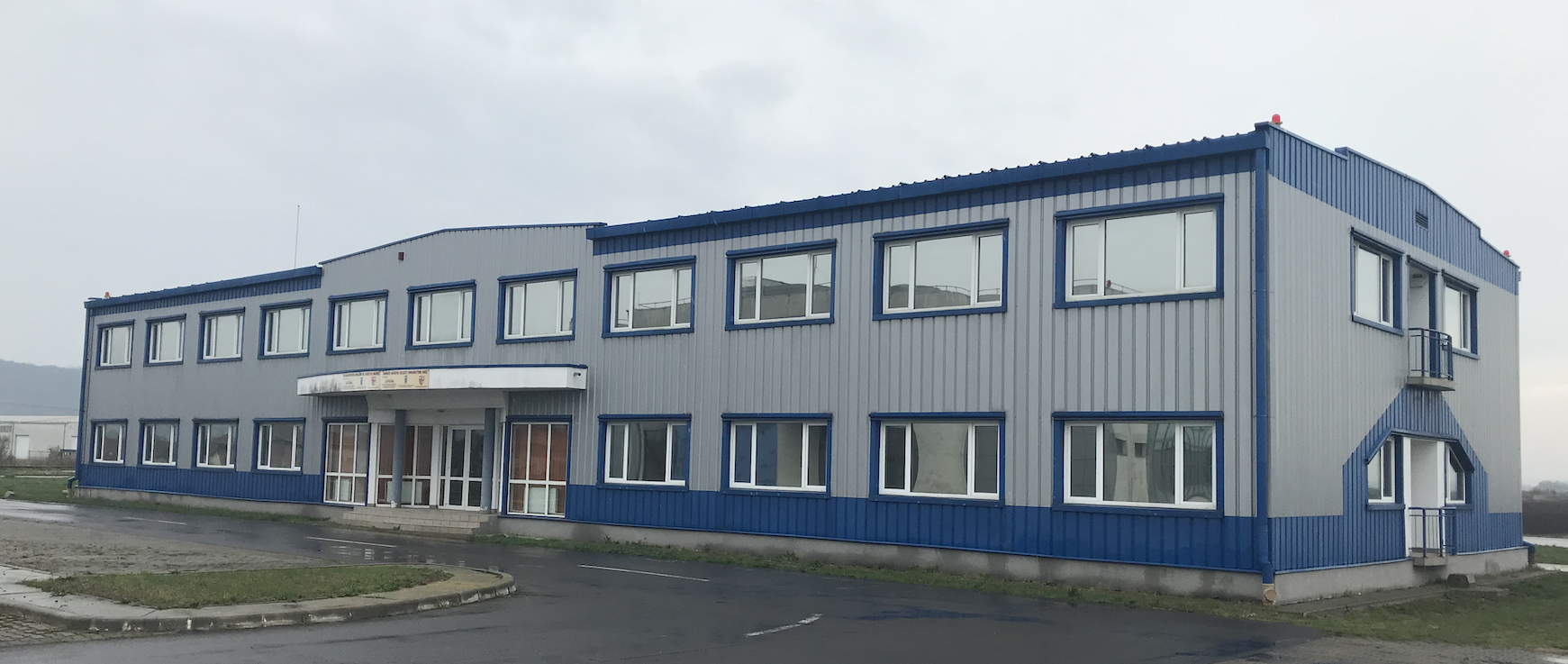A national program running between 2002 and 2012 with the objective of developing small and medium-size enterprises (SMEs) in Romania by creating a business environment favorable to them had mixed results, which raises the question of whether artificial growth by funding for creating business incubators is enough to consolidate a dynamic private sector able to cope with competitive forces and even international competition. A business incubator building once filled with life from more than 20 companies and their employees is now laying 90% unoccupied, and there is no strategy to fill up that space.
The Vidrátszeg/Vidrasău (Maros/Mureș county) business incubator shows that periodic national funding is not enough to facilitate a sustainable region-wide program. The Ministry of the Economy launched a multi-annual national 2002–2012 program for establishment and development of technological and business incubators, which resulted in ten incubators across the country. The program was partly founded by the UNDP (United Nations Development Programme) which allocated a lump sum for funding this national initiative.
As a result, ten business incubators sprung up between 2005 and 2012 across the country: Sepsiszentgyörgy/Sfântu Gheorghe, Gyulafehérvár/Alba Iulia, Kolozsvár/Cluj and Bacău were among the first. Organized in two cycles, the program offered allowance for the construction and/or renovation of a building. That’s how the business incubator in Mureș County was created in the established industrial park in Vidrátszeg/Vidrasău, 15 km from Marosvásárhely/Târgu Mureș.
With the $80,000 funding offered for real estate, the local authority chose to construct a new building in the industrial park covering 1,600 square meters. The total construction cost was 2.5 million lei and was finalized in 2009.

The company administrating the business incubator, led by István Nagy, the director of the industrial park, received a grant of $150,000 for five years, of which three represented the incubating period, followed by two years of monitoring.
“In the pre-incubating period we organized three-week-long business trainings, during which the representatives of prospective or existing companies (no older than two years) had to present a business plan and pitch the commission. This was the final step in the selection process, and the commission formed by representatives of the UNDP, county council, and more picked the 20 companies who would finally move into the business incubator,” Nagy said. There were IT companies, marketing companies, manufacturers, construction companies, and more, he added.
Every incubated company received a grant to the tune of 20,000 lei, money assigned for acquisitions, training, and specialized counseling.
“At the end of the incubating period, we drew a line and made calculations: how much money the government had invested into the business incubator and the return on investment. The results were positive: the government’s investment had tripled, because the incubated companies had given back three times the invested amount in the form of taxes.
While the results were positive, life in the business incubator stopped after the Romanian government decided to focus their finances on other things than business incubators. That led to the shutdown of the program in the majority of the freshly established business incubators, Maros/Mureș County included. Some, such as the one in Sepsiszentgyörgy/Sfântu Gheorghe survived, though.
The problem that ultimately triggered the shutdown was with the concept of the whole business incubator, according to Mr. Nagy. After visiting multiple incubators in Hungary and the United Kingdom, he says the business model adopted for the Maros/Mureș County program was obsolete. At the time of the program implementation, the new direction adopted in Western countries was the creation of co-working places, which facilities connections and networking, hence giving a boost to the creative approach to a problem incubated companies could solve.
In 2013 the Romanian government stopped the financing of this program. While the potential was there, it remained unexploited, as the company administrating the business incubator didn’t have the financial power to continue. “I proposed to continue with this program, but none of the shareholders [the main shareholder was the Mureș County council] wanted to assume the investment risk,” Nagy said. “Without financing, this kind of program doesn’t work. But it may also be due to some deficiencies of the local culture,” he added.
More than half of the incubated companies (12–13) are still alive and well, but the once-flourishing building located in the industrial park has been almost empty for years now, with the current occupancy rate of the business incubator at 10%: only two companies are renting offices in the building. And there is no strategy to fill it up with life, so Maros/Mureș County is falling behind other cities such as Kolozsvár/Cluj Napoca, Székelyudvarhely/Odorheiu Secuiesc and Sepsiszentgyörgy/Sfântu Gheorghe, where business incubators are alive and well, and contributing to a more vibrant business life.